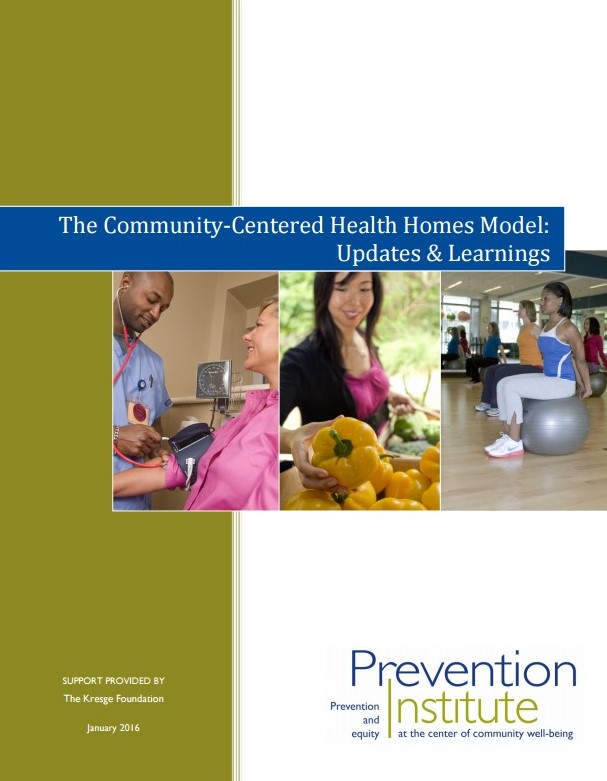“The Community-Centered Health Homes model has spurred a phenomenal transformation in our community and our clinic. CCHH is a way to make the connection to what we’re doing in the community to the services & treatment that we provide in the exam room.”
– Chandra Smiley, CEO, Escambia Community Clinics, Inc., CCHH Demonstration Project Grantee
A new Prevention Institute (PI) brief outlines what we’ve learned in advancing the Community-Centered Health Homes (CCHH) model across the country since it was first released five years ago. PI originally developed the CCHH model to provide a framework for healthcare organizations to systematically address the community conditions that impact their patients. By implementing activities based on community needs rather than medical treatment needs alone, we can improve health, safety, and equity outcomes.
In the five years since the first report release, the CCHH model has catalyzed action and activity in communities across the country – including California, the Gulf Coast Region, North Carolina, and Texas. The brief reviews and analyzes what we’ve heard from healthcare organizations actively involved in community change – particularly clinics doing early testing of the CCHH model – and summarizes lessons learned, recommendations for success, and common themes that have emerged for healthcare organizations and funders looking to implement the model. The brief was funded by The Kresge Foundation.
Included among the brief’s lessons for healthcare organizations that want to implement the CCHH model are:
- Shift focus from services to community strategy. Linking individual patients to social and community services is an entry point for healthcare/community partnerships for many organizations – and presents an opportunity to build to a community-wide strategy. When communities are healthy, fewer people get sick, demand for healthcare and social services is lower, and costs to the healthcare system are reduced. For example, the health provider might start with a housing referral but recognize and play a role in helping foster safer housing for the entire community.
- Leadership is essential. Leaders must prioritize CCHH principles as part of their organizations’ mission, vision, and operations. We are seeing more health systems acknowledge that a broad range of community factors outside of the exam room influence health – what’s commonly known as the social determinants of health – and many have programs that link patients to basic needs such as housing, transportation, and healthy food. Leaders may need better skills in understanding how to inspire and engage their staff in addressing the factors outside of the clinical setting that shape health.
- Institutions don’t change to a CCHH overnight but can start with a focus on one priority. Zeroing in on a single area of clinical or community interest, like high rates of diabetes or poor housing conditions, is a good place to start in expanding healthcare’s focus to community conditions. Healthcare providers often have access to a wealth of real-time data collected for different purposes and funders that can reveal what to concentrate on. Consider this scenario: Children are showing up at a community clinic with respiratory infections, elevated lead levels, rashes, and bug bites. By asking questions and looking for patterns, clinic staff might find that all the children live in a nearby housing development with substandard conditions. To prevent these symptoms from occurring again, the clinic could partner with local housing rights activists and legal aid organizations.
The Affordable Care Act has provided an enhanced focus on population health and new opportunities to bridge healthcare and community. This includes support for testing and spreading new care delivery and payment models that move us toward rewarding heath and quality care, and away from seeing as many patients as possible.
Momentum is building for healthcare organizations to contribute to advancing population health – improving the health of every resident in the geographic areas where they operate. Moving forward we hope the CCHH model will continue to provide a framework to conceptualize, plan, and implement strategies that address community conditions and achieve this goal.

